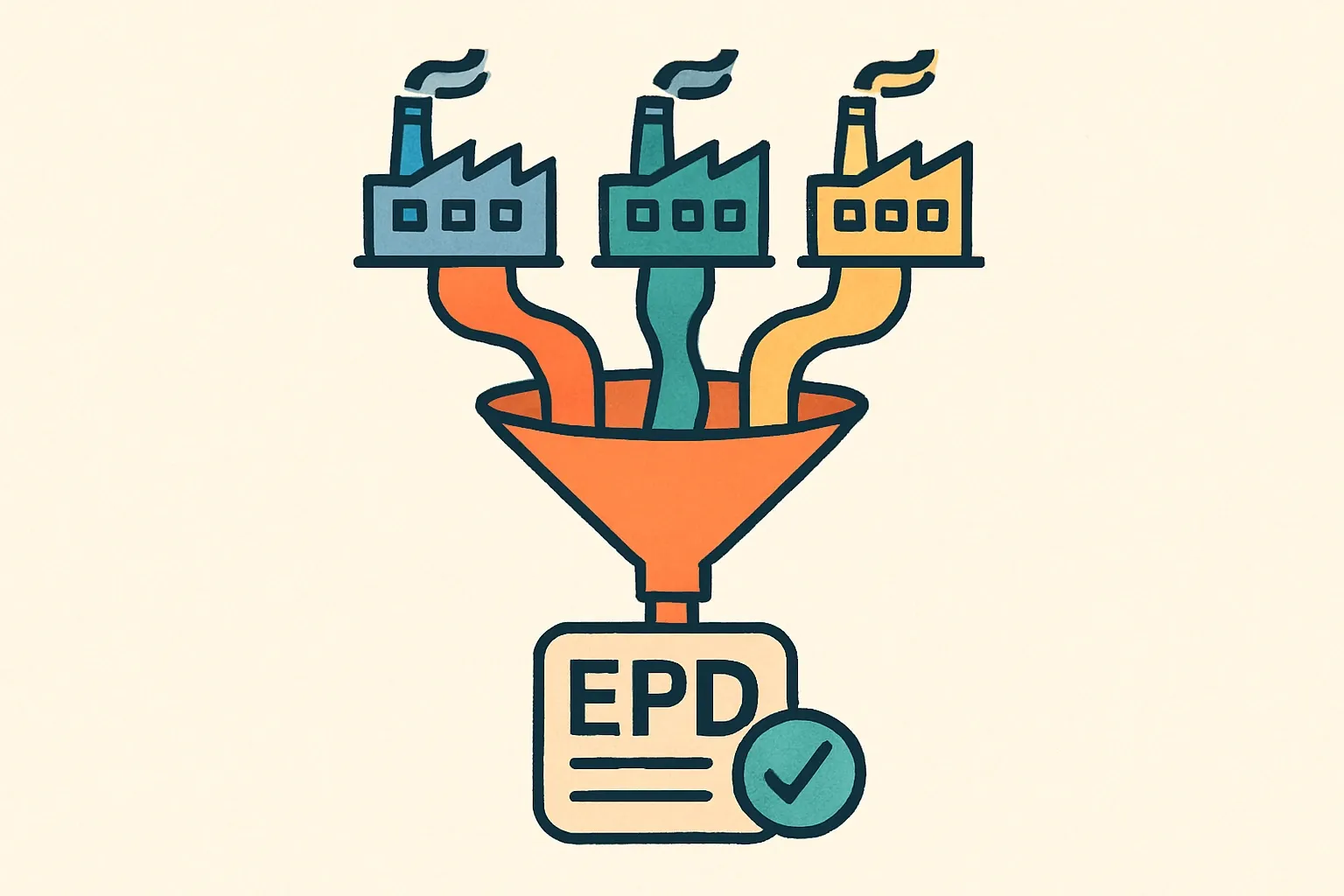Washington HB 1458: Embodied-Carbon Wake-Up Call
A new Washington bill puts facility-specific EPDs on the critical path for any project over roughly 100,000 ft². If HB 1458 survives the 2025–26 session, design teams will have to prove a 30 % embodied-carbon cut by the 2030 code cycle or reuse nearly half the existing structure. Manufacturers without credible, product-level data risk being swapped out of specs before they ever see a bid invite.


Why Olympia Cares About Concrete and Steel
Embodied carbon already accounts for about 11 % of global building-sector emissions, and that slice balloons as operational energy gets cleaner (WorldGBC, 2024). Washington’s Climate Commitment Act tightened the screws on operational fuel last year, so legislators turned their gaze upstream to materials.
HB 1458 in One Minute
- Applies to new builds, additions, and major renovations ≥100 000 ft² (House Capital Budget version, Feb 2025).
- Lets project teams pick one of three tracks: 45 % reuse of structure, product-based reductions, or a whole-building LCA.
- Locks in a 30 % embodied-carbon cut relative to 2023 Carbon Leadership Forum baselines by the 2030 code (HB 1458, 2025).
- Mandates a public database and random audits of 3 % of projects.
The Product Path Hangs on EPDs
Choosing the product-based track means proving that 90 % of covered materials, measured by cost, mass, or volume, beat the industry average GWP (HB 1458, 2025). The bill explicitly calls for product- and facility-specific EPDs—industry-wide declarations will not fly after the 2027 code. If your plant lacks its own Type III EPD you are essentially invisible to specifiers.
Facility-Specific vs. Industry-Average: The Math
CLF’s 2025 baseline lists ready-mix concrete at 338 kg CO₂e/m³. A plant running 30 % SCM cement substitution can hit ~250 kg CO₂e/m³. Without a facility EPD, that improvement never shows up in the project carbon ledger, so thier product looks just as dirty as a standard mix.
Data Wrangling Gets Formal
The Department of Commerce must publish a standard reporting form and host a live database. Expect column headings for lot numbers, batch dates, and EPD registration IDs. Design professionals must stamp the final carbon math, and the state can spot-check your numbers at any time. Sloppy or missing data could trigger re-work delays right before certificate of occupancy.
Commercial Upside for Fast Movers
State and tech-sector owners already write low-carbon clauses into RFPs. Once HB 1458 filters into local code, those clauses become hard requirements instead of nice-to-haves. Manufacturers boasting facility EPDs typically see a 5–10 % price premium on short-listed bids for mass-timber and lightweight framing packages (CleanTech & Env Policy, 2025). No iron-clad averages exist yet, but early adopters are clearly cashing in.
How to Gear Up Now
- Audit your data gaps. Pinpoint missing utility meters, waste logs, or transport mileage.
- Pick a PCR your competitors use. The CLF baseline table reveals which rulebooks are most common.
- Streamline plant-level data capture. Automated pulls from ERP and QC labs save weeks.
- Line up a program operator. Smart EPD and IBU both accept North American submissions.
- Schedule annual refreshes. HB 1458 ties reporting to each code cycle—falling behind wipes out spec advantage.
Keep Pace With the Code Cycle
The State Building Code Council will publish draft rules for the 2027 code as early as November 2026. Manufacturers who lock in facility-specific EPDs before that draft drops will steer the baseline, not chase it. Missing that window could leave your material on the cutting-room floor when architects fire up EC3 next spring.
Frequently Asked Questions
Does HB 1458 ban industry-wide EPDs outright?
Not immediately, but it phases them out. The 2024 code still accepts industry-regional EPDs if a facility-specific version is unavailable. By the 2027 cycle, product- or facility-specific declarations become mandatory for covered materials.
What building types fall under the bill?
Any Washington project over roughly 100 000 ft² governed by the International Building Code, except K–12 schools which were exempted in the House Capital Budget amendment.
How big is the required carbon cut?
Projects must show a 30 % reduction in global warming potential versus 2023 CLF material baselines (or a reference building) by the 2030 State Building Code.
Can a manufacturer with multiple plants file one EPD?
HB 1458 specifies facility-specific EPDs, so each plant needs its own declaration unless the PCR explicitly allows averaged data, which is rare for construction materials.
Will the state share my proprietary mix designs?
The public database will publish high-level attributes like GWP, but proprietary formulation details remain confidential under existing trade-secret provisions.
Does HB 1458 create a legal EPD mandate right now?
No. The bill died in 2025, so nothing is legally binding today. However, the State Building Code Council may adopt similar rules without new legislation.
